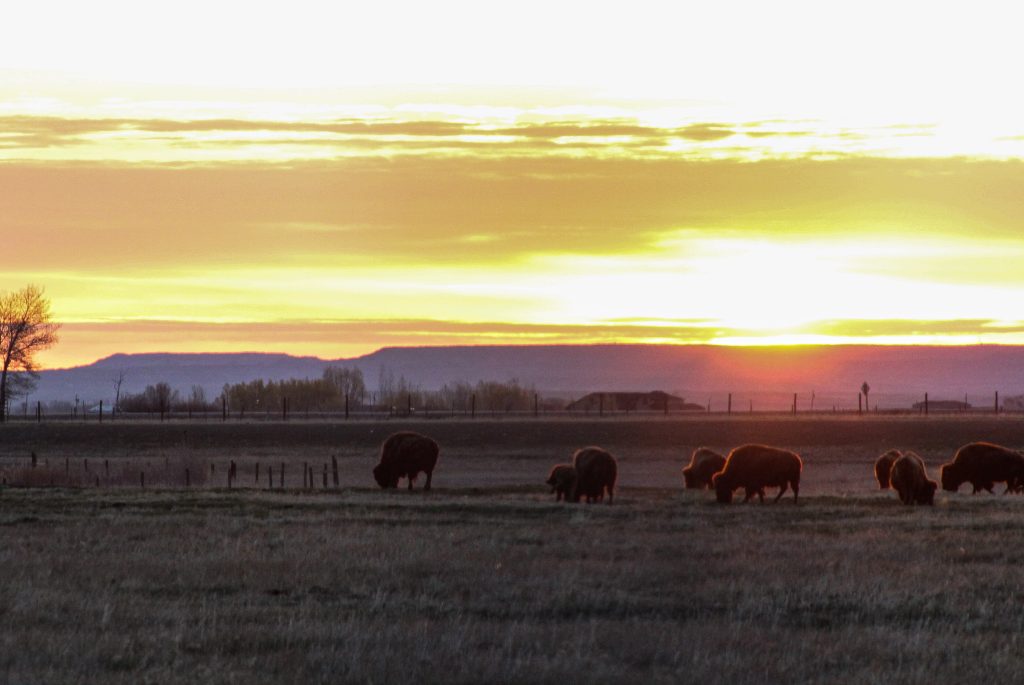UW CBEA releases 2024 economic forecast

For the first time, the University of Wyoming (UW) unveiled a statewide economic forecast exclusively for attendees of the 40th Annual Governor’s Business Forum, which took place on Nov. 15 in Laramie.
State leaders joined UW Economics Professor and Researcher Dr. Anne Alexander in a panel discussion to examine topics related to Wyoming’s economy.
WyoTech President Jim Mathis started the discussion by introducing the distinguished panel, which consisted of elected officials and legislative leadership.
The panel discussion allowed attendees to hear from Alexander as she described the future of Wyoming’s economy, as well as state experts regarding Wyoming’s current economic situation and what actions are needed to ensure the state’s economic future remains bright.
A look into the future
The UW Center for Business and Economics Analysis (CBEA) released its first annual economic forecast to help Wyoming businesses and policymakers plan for 2024.
The forecast included industry-specific data analysis while identifying key factors influencing each sector.
“Inflation is beginning to moderate, while the state’s population is expected to increase,” Alexander stated. “A few systemic problems the state faces include unaffordable housing, challenges in accessing childcare for workers and low college attendance numbers.
“According to the Housing Affordability Index, housing affordability in Wyoming turned negative in 2022 and housing became relatively unaffordable for the median-income household in Wyoming,” UW CBEA reported.
The economic summary report released in September by the Wyoming Department of Administration and Information stated, “Statewide, single-family home prices increased 2.4 percent in the second quarter of 2023 compared to one year ago, a lower increase than the previous quarter, and single-family building permits for new, privately-owned residential construction in the second quarter of 2023 were 33.5 percent lower than the previous year, while multi-family units decreased 48.3 percent.”
The state housing crisis topic received a variety of responses from the panel.
Some panel experts believe the government should not be involved in this process and regulations need to be reduced, while others believe the state needs to focus on infrastructure first.
Meanwhile, Senate President Ogden Driskill (R-HD01) voiced concerns about Wyoming’s housing industry and how it can impact the state’s economy in the future.
He mentioned a bill the state’s Regulatory Reduction Task Force recently drafted to lower standards in some communities for the approval of new housing.
“I believe this is an issue Wyoming struggles with. Forty percent of the cost of building a new house in Cheyenne stems from regulatory costs,” he noted. “If we want our economy to grow, we must find ways to have housing across the state.”
Panelist and House Speaker Albert Sommers (R-HD20) agreed, “Workforce development and housing are two essential issues in bringing individuals to the state.”
The state’s affordability housing issue is connected to Wyoming’s median household income, which Alexander views as a serious issue when trying to grow the state’s economy.
Other issues
The 2024 economic report released by UW CBEA stated Wyoming experiences around 70 percent outmigration of recent UW graduates.
Alexander continued, “Only 45 percent of the state’s population were native Wyomingites as of 2021 – one of the lower rates for native residency in the country.”
Panel members identified Wyoming’s young people are leaving the state to live somewhere else, a concept called “brain drain.”
Brain drain occurs when professional workers move elsewhere so they can benefit from better pay, working conditions, lifestyle and, sometimes, work-life balance. It is economically costly to the place individuals leave from.
However, State Auditor Kristi Racines raised the question of whether brain drain is a negative for Wyoming.
Sommers stated, “When they come back to Wyoming, they are more knowledgeable, skilled and able to improve the state in whatever area they come back in.”
He continued, “The trend of Wyoming’s graduates leaving the state to find jobs and build lives isn’t the big problem many make it out to be, as long as they come back.”
Alexander added, “Wyoming’s population is expected to grow slightly in 2024. However, the growth will come from new residents who are age 65 or older, and all other age groups will decline.”
“This influx of an older population is part of the state’s problem. Younger workers and homebuyers can’t compete with retirees who have generated wealth throughout their lives,” Sommers added. “The legislature must work collectively with business leaders to attract and keep professionals, and we need to make an effort to solve this problem or it will never be resolved.”
Driskill agreed, “Wyoming needs to work on bringing more high-paying jobs to the state and help businesses move in a positive direction.”
On the positive side
Alexander shared she feels the state’s agriculture, hospitality and construction industries are in good shape but expressed there are business leaders in Wyoming using the phrase “waiting for the other shoe to drop,” which signifies confidence in the state’s economy but also demonstrates worry it will not continue.
Current data from the Wyoming Department of Revenue reported lodging sales for the state increased 19.7 percent in the second quarter of 2023. Also in the second quarter of 2023, business filings in Wyoming were up 33 percent from 2022 and 48 percent from 2021.
Driskill added he feels Wyoming’s growth is driven by innovation, and the state will continue to embrace and facilitate this growth.
“The state must retain its culture and continue to grow by promoting the concept of a community becoming self-sustaining through the creation of new industries and sectors based on its own isolated economy,” Sommers replied. “These concepts need to apply to cities like Cheyenne and Casper, but also cities like Sheridan, Rock Springs and Laramie.”
Alexander concluded, “Natural resources, mining and financial services have a mixed forecast and are complex issues, but the state’s current unemployment rate is low and the rate is expected to increase slightly in 2024.”
Melissa Anderson is the editor of the Wyoming Livestock Roundup. Send comments on this article to roundup@wylr.net.





